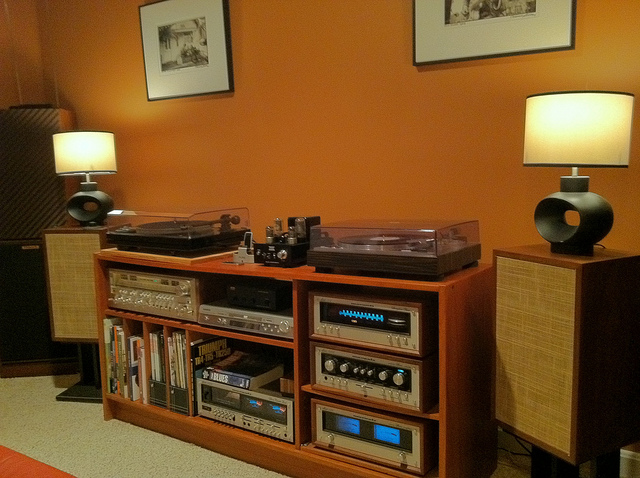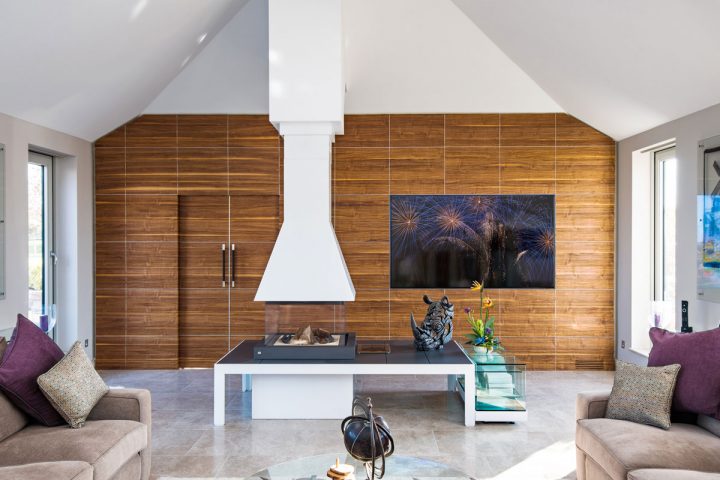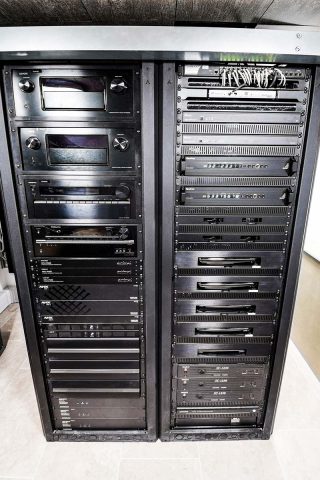Preparing for this blog entry I started by asking myself “What is a rack?” Childishly that made me snigger, just as the whole room and particularly the guest presenter (usually a well-known comedian) sniggers during the Cedia Awards when they announce the prize for “Best Dressed Rack”. Yes, they give an award out for the neatest wiring job round the back of an equipment rack!
So, let’s move on from infantile humour and look at the purpose of the equipment rack that your installer will no doubt have included on the quotation for your job. But first, to understand why the need for racks has arisen, it is good to cast our minds back a few years…

Back in the 1960 and 70s the priority list of the essential purchases needed to equip your life when you were just starting out, maybe had just got married, had four main items on it:
- House
- Car
- TV
- Hi-Fi system
Today’s list has probably got a lot more than four essentials on it and they will no doubt be very different due to economic, social and technological changes – it’s hard for young people to afford a house now, we all need smart phones, the dishwasher and microwave are essential, as is the Sky box and PlayStation.
It was generally the man of the house who added the hi-fi system and, in the golden era of hi-fi, it had to be big. The more boxes the better – turntable, amplifier, tuner, cassette deck etc. – and they had to be on show. The hi-fi system was the smart phone and flat panel TV of the day. You wanted to show it off so your friends could see you’d got the latest, greatest pieces of kit, packed with the best technology of the day. It was essential to have the hi-fi on display.
How things have changed. Now hi-fi probably doesn’t even figure in the top 20 of most people. And we want our entertainment technology to work seamlessly and generally be out of sight – just doing what it does, but not shouting about it ostentatiously. That’s where the rack comes in.

Once the domain of the computer installation in offices, the metal rack with multiple shelves to house the anonymous black boxes, is now de ri·gueur in today’s home entertainment installations. It’s a very neat solution for what to do with the multitude of boxes that are required to equip a home with TV and music in every room. The principle of centralised equipment, with the wiring from each room routed back to a cupboard full of equipment is a sound one. It’s not necessary to have ugly black boxes on display in every room of the house – the Sky boxes being used to feed the lounge, kids rooms, games room and kitchen and all the amplifiers, media servers, Apple TVs and the like can all be located in one place with their signals being sent down wires built into the fabric of the house. This has numerous advantages, not least the fact that the house is kept free of the technology, it also permits much easier maintenance when required.
And for control via a universal remote or iPad based system, centrally located equipment is essential – hidden infra-red (IR) detectors around the house are all routed back to the rack where IR emitters control the pieces of equipment.
 As well as hiding all the equipment, the rack serves a number of very practical purposes:
As well as hiding all the equipment, the rack serves a number of very practical purposes:
- Equipment is securely fixed in place at the desired height and position using purpose built fixings called rack ears, or it is stood on dedicated shelves that are themselves fixed in place.
- Wiring up around the back of the equipment is made easier as the cables can be prepared at exactly the right length – much tidier than a jumble of wires looking like a plate of spaghetti!
- The electronics can get hot and so by spacing the equipment apart, rather than standing one box on top of another, ventilation is improved and it’s also possible to install special cooling fans in the rack that draw out the heat and expel it into the room. This helps preserve the lifespan of the equipment – with less breakdowns and the need to call engineers out to reset equipment that has overheated!
- And finally, from a security perspective the rack can be locked to stop unwanted tampering with the settings and to help prevent theft – lifting the whole heavy rack out in one piece to steal it is difficult!
So, there you have it; that mundane and functional piece of equipment that’s been specified by your installer and listed on the quotation, is an essential part of the installation.

